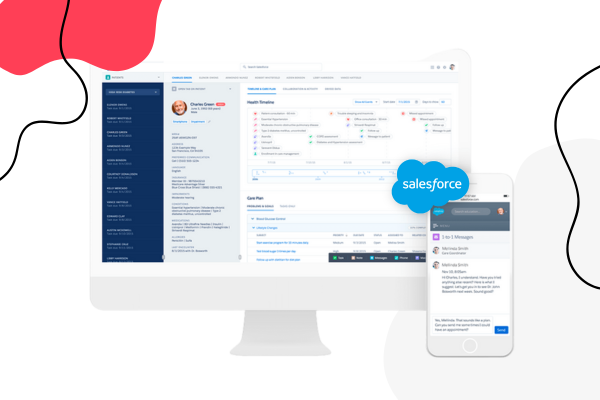What Product Does the Healthcare Industry Sell?

Guest article by Chris Saxman, Senior Healthcare Executive, Serial Entrepreneur and Board Member/Mentor for Startups. Mr. Saxman is a member of the HealthTech Networking Club.
Creating a Health Industry
The healthcare industry sells only one product — health. People engage with the industry when they are sick in order to return to health or when they are healthy and want to stay that way. Have you ever heard of anyone having surgery simply for the experience? In the broadest sense, health means that the state of a person’s body doesn’t hinder that person from doing what he or she wants or has to do. Put another way, people don’t want their lives disrupted by poor health. Customers come to the industry to be healthy so they can enjoy life, in the same way that they purchase iPhones to enjoy a superior communications experience.
There is a fundamental mismatch in the economic structure of the healthcare industry today. It is structured as a B2B industry, in which providers sell encounters to payers. Individuals have no agency in decisions related to their health, even though health is the ultimate B2C product. The checks and balances found inherently in a free market don’t exist in healthcare. Therefore, payers and providers have designed expensive, complex workarounds to create artificial checks and balances, such as utilization management to limit “unnecessary care.” Healthcare’s structural mismatch is the core driver of the misaligned financial incentives that plague the industry.
How can the industry shift from being driven by business transactions negotiated between large businesses to being driven by decisions made by individuals, based on the value they perceive? This is a different question than what “traditional” value-based care attempts to address. Most value-based structures are still fundamentally B2B. In fact, they often add complexity to an already complex contractual relationship between payers and providers. This question also addresses a slightly different (but related) point to that made by those that recognize we have a “sick care” industry and advocate for “well care”.
Sick care and well care are fundamentally the same thing. Tony Miller, CEO of Bind, points out that a person’s health is a continuous function throughout life. Sometimes you are healthy, and sometimes you are sick or injured. You only care about staying at the top end of Tony’s health function for as long as possible, at as little cost, inconvenience and physical discomfort to you so that you can live life as you want. Wellness products, as well as services that address social determinants of health, become as valuable to people as good medical care. Given that people value health and not healthcare, the industry should focus on selling health to individuals (who become customers, not patients or members) regardless of where such individuals are on their health functions.
Under this new economic model, well care and sick care become simply “product features” of the complete health product. The auto repair industry sells oil changes and many other maintenance services to keep your car running in top shape. Why can’t a health industry sell products and services to keep your body running in top shape so that you can live life to the fullest? Just like you would prefer to call a trusted auto mechanic when your car breaks down, you will turn to your trusted health team that has been working to keep you fit when a medical issue does arise.
Beyond obvious benefits related to continuity of care, a model built around health as a product delivers a superior customer experience similar to what many other industries long ago developed and deployed. A new health industry replaces distinct, disconnected wellness and healthcare industries, each of which currently offers just part of the solution that people want — life without disruption from poor health. Health companies can offer complete products and services to their customers throughout their lives, earning recurring revenue when they delight and deliver value to these customers. People gladly pay a premium for Apple products because they perceive significant value in these products; these are value-based payments. Let’s develop value-based business models for health where customers pay for what they value — uninterrupted, fulfilling lives.
Watch a panel discussion where I discuss Health as a Product with other healthcare executives.
Moving from Thought Exercise to Reality
This article is meant as a thought exercise to encourage innovators to reconsider common assumptions about healthcare’s underlying economic structure. Imagining what a health industry might look like in an ideal world can form the basis for innovation in the real world. However, innovators must account for moral imperatives such as the extreme inelasticity of demand when someone is gravely ill. They also must address myriad real-world considerations such as: (1) overcoming the inherent inertia of a massive, complex and entrenched industry; (2) complying with regulatory and contractual requirements; and (3) most importantly, convincing customers to consume health rather than healthcare. Innovators should use the “health as product” framework to inform real world decisions about incremental changes; it is not a wholesale call to change the industry entirely.
Different economic models are appropriate for various real-world situations, depending on where a person is on the journey through Tony Miller’s continuous health function. Guiding principles for all of these models should include:
- viewing people as valued customers rather than patients or members;
- building and maintaining customers’ trust;
- engaging with customers early and often to place them as high on the health function as possible at a young age and to keep them there as long as possible; and
- implementing economic models that allow for normal market forces to operate whenever possible to give individuals agency over their health while not affecting adversely those facing major medical crises or leaving behind those without sufficient financial resources for necessary care.
Productizing Health
How might we productize health in the real world and engage with individuals to “purchase” health at different points in life? Where is it most critical to incorporate the “health as product” framework into our decision-making in the way described above?
Core elements of a health product include:
- Customer-centric Product Development applied to various “product features” of health. We should develop products and services for customers who are in various states of healthiness that provide them with delightful experiences.
- Marketing Prowess applied to health to convince people to engage with the health industry regularly, rather than waiting until they are sick, and to recognize and desire the value that this engagement creates for them.
- Payment Models that:
- Give customers agency over their health decisions and incentivize them to do the right thing for their health in ways that delight them;
- Recognize that not all care is the same and that demand elasticity matters (treatment for the common cold and for cancer should not employ the same business model);
- Align financial incentives of all parties (customers, health systems, providers and payers) so that everyone at the table will want to cooperate;
- Pay for care in aggregate, rather than atomized bits (i.e., direct primary care subscriptions and surgery bundles rather than fee-for-service payments);
- Empower organizations, and partnerships of organizations, to sell services to customers no matter where they are on the health function; and
- Compensate innovators for developing truly new delivery models (rather than simply replicating current clinical workflows digitally) to make providers’ orders of magnitude more efficient and customer centric.
- Transparency for Customers around provider choice, options available, pricing and quality, all delivered in ways that anyone can consume easily and quickly.
- Transparency for Providers around their performance, relative to their peers, in terms of protocols, outcomes and customer satisfaction.
- Data Interoperability to allow customers to consume health in the ways they desire without suffering from current walled gardens of data within provider organizations.
- Data Privacy and Security Expertise to ensure the confidentiality and proper use of customers’ personal health data, engendering rather than eroding trust.
- Risk Mitigation for serious medical concerns and tools to address the demand inelasticity and information asymmetry faced by consumers during such times.
- Simplification of all areas of the industry to eliminate steps, cut processes and generally remove as much of the bureaucracy that the industry has accumulated over the last century. Think of it as institutional bypass surgery.
Of course, no one solution will be able to alter the US healthcare system completely. The point of this article is to encourage innovators to consider the root causes of the problems plaguing the US healthcare system when crafting solutions. The bullets in this section constitute an initial list of innovations necessary for productization of health, which is surely incomplete. In subsequent articles, I will explore concrete examples of innovations that might have outsized effect on productizing health and will examine innovative companies that are already developing new business models to give people agency over their health.
Addressing healthcare’s myriad problems requires the insights, knowledge and actions of many people from all segments of the industry. I hope that readers of this article will contribute their voices to the conversation. Together, we can improve healthcare, one decision at a time.
by Chris Saxman
LinkedIn: https://www.linkedin.com/in/mcsaxman/
Twitter: https://twitter.com/mcsaxman
Blog: https://medium.com/@mcsaxman
Thanks to everyone who reviewed and provided feedback on drafts of this article. Your insights were invaluable, and I am incredibly grateful for your support and interest.
Connect with industry professionals in the HealthTech Networking Club
The invite-only club connects HealthTech startups, investors, consultants, suppliers, and healthcare providers and accepts applications from all areas of HealthTech including IoMT, Pharmatech, and Biotech to bring more valuable connections to its members.
If you are a HealthTech company and believe your organization can benefit from new connections and contribute to the community, apply for membership.






